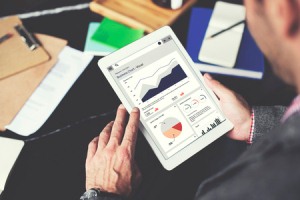The data analytics market is enormous, with valuations ranging from around €80 billion by 2025 to well over €100 billion. But it’s a complex market, with lots of players and a great deal of investment required to develop the platforms and algorithms that allow operators to mine vast datasets to create value and insight.
As Cormac Whelan, CEO for the UK & Ireland at Nokia writes, operators want (and need) to be focusing on their customers and streamlining their business, not figuring out how to process data – particularly if their data is too limited to provide the level of insight needed.
Right insights
Increasingly, companies are recognising the value of mobile network data and Ovum’s report on data insights in digital advertising and the role of operators found that 67% of brands already view mobile operators as good original sources for customer data insight, ahead of digital media companies, chat app platforms, and device manufacturers.
The conundrum is how to track customers in the real world, without invading their privacy and grossly overstepping boundaries.
The answer is simple. Every day, we carry a small slab of glass and metal in our pockets that connects us to the world and, by virtue of being with us at all times, can fill in the blanks around where we go and how we behave when we’re not online. This isn’t a case of creating new data or tracking, but rather using existing network traffic data to provide powerful insights.
Mobile devices already share a great deal of data with network providers in order to receive and maintain a signal, send messages and make calls. That data can, and should, work harder. When anonymised and collated across vast populations, the data shows how people flow through cities or how they engage with public services, even billboards and advertising.
Making data work harder
The potential in this mobile network data is huge, but transportation, city planning and the travel industry are the most likely to see the short-term benefits. By seeing population movements, city planners can better plan urban environments, transport agencies can provision better services and travel companies can provide a more bespoke service to their customers. At a more granular level, mobile network data will allow you to contact passengers affected by disruption, implement congestion charging based on real time traffic, and identify the routes customers take as they navigate the city.
On top of this, truly insightful and accurate data improves efficiency, lowers costs and creates a better customer experience. By seeing where there is real demand and provisioning appropriately, businesses can reduce costs by only taking decisions they know will prove profitable. Customer satisfaction will also increase through both better service provision and added value through things like travel alerts with advice on avoiding delays or re-routing due to incidents.
The biggest challenge is getting enough data and being able to effectively interpret it. Some network operators won’t have enough market penetration to collect the enormous amounts of data required and developing the platform and tools for making sense of the data is challenging and time consuming. Using a platform that can amalgamate data from multiple networks using smart analytics and algorithms is the most effective way to increase the quality of their data and drive real business value.

Putting it into practice
This is already a reality. In a recent trial with a UK operator, we collected 9 billion data points to test our platform and prove its viability for coverage assurance. In Asia, our partner StarHub has already added web browsing data to the profiles created from analysing network data, to better identify customers.
By seeing what customers are looking at, and where, they can understand when customers are making buying decisions and which companies they’re looking at. This allows for highly targeted advertising that reaches customers in the right place and at the right time.
This is just a very small snapshot of what is currently possible and being done around the world. As the technology develops, it has the potential to use location data to harmonise app usage or disable certain features in key locations (such as disabling cameras in airports or other areas with heightened security).
Similarly, the data could be used to improve parking by automatically identifying whether the correct permit or payment is in place. There is even the potential for network data to inform advertisers how effectively their billboards are performing.
The telco market has been at the forefront of improving efficiency to drive down costs and improve customer service and other industries need to learn from these lessons. Efficiency will increasingly become the key metric for every industry and data will be the primary route to unlocking it. This isn’t a revolution, but rather an evolution that we need to set in motion today.
The author of this blog is Cormac Whelan, CEO for the UK & Ireland at Nokia
About the author
Cormac Whelan is the CEO for the UK & Ireland at Nokia, having taken up this role in January 2016. In this role he leads all operations for the UK & Ireland markets including sales, business management, delivery and operations.
Comment on this article below or via Twitter: @IoTNow_OR @jcIoTnow










